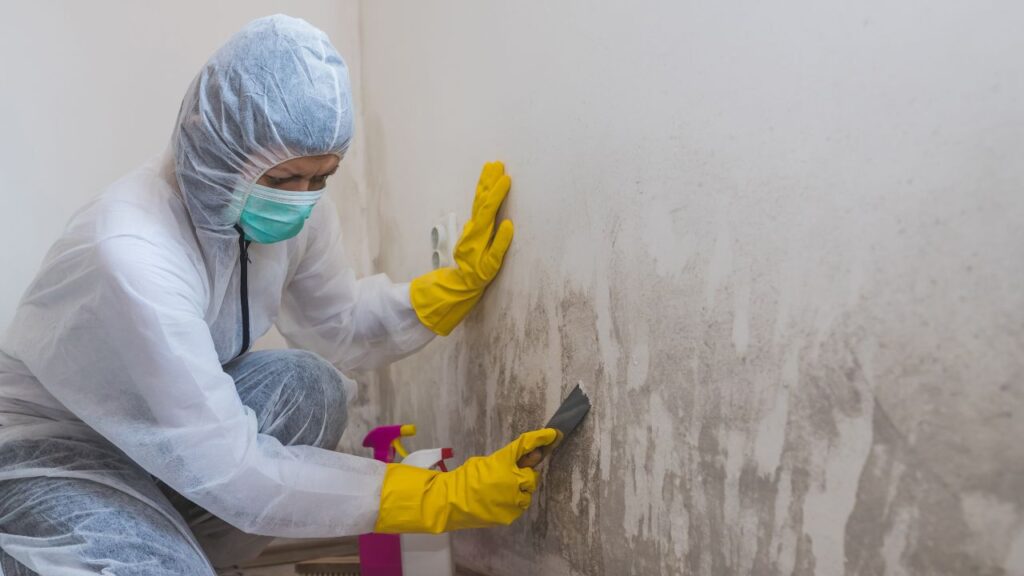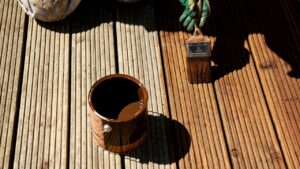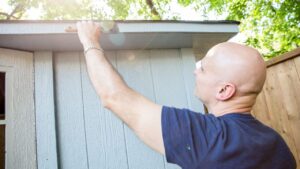If you’ve ever noticed a dark or discolored patch on your painted wall, then you’ve likely encountered mold. This pesky fungus is more than just an aesthetic issue. It can ruin your wall paint, damage your home, and even pose health risks. So, what exactly is mold, and why does it grow on painted walls? Let’s find out.
Mold is a type of fungus that thrives in damp and humid environments. It reproduces by releasing tiny spores that can travel through the air. These spores settle on surfaces and start to grow when conditions are right—with enough moisture, warmth, and organic material to feed on.
The Causes Of Mold Growth
Several factors contribute to mold growth on painted walls. One of the most common causes is high humidity levels. If your home is overly humid or poorly ventilated, it provides the perfect breeding ground for mold. Bathrooms, kitchens, basements, and laundry rooms are particularly susceptible due to the frequent use of hot water and lack of proper ventilation.
Another factor is water leaks. Walls exposed to constant dampness from plumbing leaks, roof leaks, or window leaks are prime real estate for mold growth. Moreover, if the wall material itself is organic—like drywall or wooden paneling—it can provide the nutrients that mold needs to thrive.
Lastly, let’s not forget about condensation. Cold surfaces can cause water to condense out of the air, creating a wet surface perfect for mold growth. Hence, walls that are regularly cold to the touch, particularly exterior walls or those with poor insulation, may attract mold.
Assessing The Extent Of Mold Damage
Before you roll up your sleeves and start cleaning, it’s crucial to assess the extent of the mold damage. The first step is to spot the visible signs of mold. These usually appear as black, green, or white spots or streaks on the surface of the wall. You might also notice a musty odor, which is a telltale sign of a hidden mold problem.
Next, check for signs of structural damage. If the wall is soft, crumbling, or bowed, it suggests that the mold has penetrated deep into the material. In such cases, cleaning might not be enough—you might need to replace the drywall.
However, if the wall seems structurally sound and only has surface mold spots, it’s time to gather your cleaning materials and get to work. But remember, if the mold covers a large area (greater than 10 square feet) or if you’re experiencing health symptoms, it’s safer to call in a professional instead.
In the next part of this guide, we’ll discuss the materials you need and safety precautions to take before starting this task. We’ll also talk about how to choose the right cleaning solution and provide a step-by-step guide to removing mold from your painted walls. So, stay tuned!
Essential Materials & Safety Precautions
When tackling mold on painted walls, you’ll need several essential materials. These include a cleaning solution, a spray bottle or bowl, a sturdy scrub brush or sponge, and clean cloths for wiping. A fan or dehumidifier could also come in handy for drying the wall after cleaning.

Safety should never be overlooked when dealing with mold. Always wear protective gloves and a mask to shield yourself from mold spores and potential chemical irritants. Ensuring the area is well-ventilated is also crucial to prevent the accumulation of harmful fumes during the cleaning process.
Choosing The Right Cleaning Solution
Choosing a suitable cleaning solution is vital. You have several options, ranging from natural remedies to chemical solutions.
One option is a bleach solution, which combines one part liquid bleach with three parts water. This potent mixture is excellent at killing mold spores and removing stains, but caution is needed as bleach can be harsh.
Alternatively, distilled white vinegar mixed with water offers a natural solution. Vinegar is known for its antimicrobial properties effective against various mold strains.
Baking soda paste, made by combining water with baking soda, is another gentle yet effective solution for tackling light mold.
Lastly, a mix of hot water, borax, and vinegar creates a slightly stronger natural cleaner.
Step-by-Step Guide To Removing Mold
Removing mold from painted walls involves a systematic approach. First, apply your chosen cleaning solution to the moldy area using a spray bottle or sponge. Let it sit for 10 to 30 minutes, depending on the severity of the mold and the strength of your cleaning solution.
Next, gently scrub the area with a brush or sponge. If the mold proves stubborn, don’t hesitate to apply a second round of cleaner and scrub again.
Once the mold is removed, wipe the area with a damp cloth to eliminate residue from the cleaning solution and any remaining mold debris.
Ensure the wall is thoroughly dry before declaring the job done. Use fans or a dehumidifier to speed up the drying process and discourage mold from making a comeback.
Finally, inspect the wall closely. If any mold remains, repeat the cleaning process.
Remember that removing mold can be a challenging task. If the mold covers a large area, or if you’re experiencing health symptoms, it may be best to call in professionals who specialize in mold remediation. They have the tools and expertise to handle extensive mold issues safely and effectively. In the next part of this guide, we’ll delve into the process of rinsing and drying the wall, how to prevent future mold growth, and when to seek professional help. “”
Rinsing & Drying The Wall
After you’ve scrubbed away the mold, it’s time to rinse the wall. Wipe it down with a clean, damp cloth to remove any remaining cleaning solution and mold residue. It’s important not to skip this step, as leftover solution can attract dirt and leave unsightly stains.
Once the wall is clean, dry it thoroughly. Mold loves moisture, and even a small amount can invite it back. Use clean, dry cloths to blot the wall. If possible, open windows or turn on fans to circulate air and speed up the drying process. A dehumidifier can also be useful, especially in humid environments.
Preventing Future Mold Growth
Preventing mold from returning is equally important as removing it. Here are a few tips to keep your painted walls mold-free:
- Control Humidity: Keep the humidity levels in your home below 60%. You can use a dehumidifier or an air conditioner to help control moisture.
- Improve Ventilation: Ensure rooms, especially bathrooms and kitchens, are well-ventilated. An exhaust fan can help circulate air and reduce moisture.
- Fix Leaks: Regularly check for leaks in your plumbing, roof, or windows. Fixing them promptly will eliminate one of the primary sources of moisture that mold needs to grow.
- Use Mold-Resistant Paint: Consider using mold-resistant paint, especially in rooms prone to dampness. It contains chemicals that prevent mold spores from taking root.
When To Seek Professional Help?
Sometimes, despite your best efforts, mold can prove stubborn. If the mold covers a large area, keeps coming back, or is causing health symptoms like allergies or breathing difficulties, don’t hesitate to call in the pros. Professional mold remediators have the tools and expertise to deal with extensive mold issues safely and effectively.
Professionals can also identify and address hidden mold, which you might miss. Hidden mold can lurk behind walls, under carpets, or in other hard-to-see places. It can cause as much damage as visible mold, so don’t risk it—get professional help if you suspect you have a severe mold problem.
Final Tips
Mold on painted walls can be a nuisance, but with the right materials and methods, you can get rid of it. Remember, the key to successful mold remediation is to not only clean it but also to prevent it from coming back. Keep your home well-ventilated, control humidity, and fix leaks promptly.
However, if the mold is extensive or causing health issues, seek professional help. Don’t risk your health or the integrity of your home. In the end, prevention is always better than cure. So, keep an eye out for the first signs of mold, and act quickly and effectively to keep your home mold-free and healthy. Stay tuned for more practical and straightforward tips on home maintenance and improvement.





